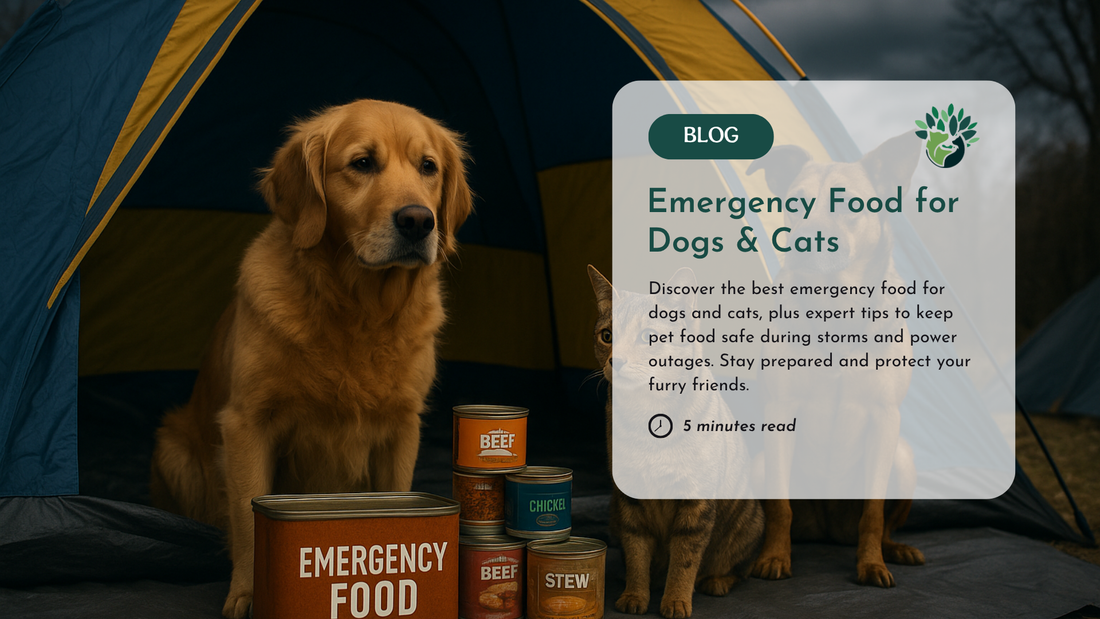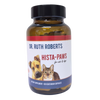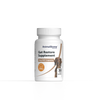When hurricanes, floods, or power outages strike, one of the biggest concerns for pet owners is keeping their pets fed and healthy. While ensuring safety is your top priority, maintaining access to safe, nutritious emergency food for dogs and cats is equally important.
A little preparation before disaster strikes can make all the difference. Let’s explore how to keep your pet’s food safe, fresh, and ready to serve in any emergency.
What Should You Do Before a Storm Hits?
Preparation starts before the first raindrop falls. Make sure you have these essentials ready:
- Thermometers: One for your fridge/freezer and another for checking food temperature.
- Coolers and Ice: Keep block or dry ice available, or freeze water in gallon bags.
- Safe Storage Temperatures: Refrigerator: 40°F or below. Freezer: 0°F or below
These tools help preserve both human and pet food safely during power outages.
What Are the Best Emergency Food Options for Dogs and Cats?
When preparing for emergencies, stock up on shelf-stable pet food that won’t spoil quickly. Here are the best options:
-
Frozen Homemade Pet Food: If you prefer preparing your own meals, freezing homemade food is an excellent way to ensure freshness and nutrition. Meals like The Original CrockPET Diet can be portioned into single servings (using muffin tins or containers) and stored in the freezer. A full freezer helps maintain safe temperatures longer, even during power loss.
-
Freeze-Dried or Dehydrated Meals: Lightweight, easy to store, and rehydrate with water. Vacuum-Sealed Cooked Meals: Convenient, pre-portioned, and shelf-stable.
-
Canned Food: Moisture-rich, long-lasting, and nutritionally balanced.
These choices make excellent emergency food for dogs and cats, especially when refrigeration isn’t available.
Can You Make Homemade Emergency Food for Pets?
Yes! Preparing homemade emergency food for dogs and cats is one of the smartest things you can do before a storm or power outage. While commercial canned or freeze-dried food is great for convenience, having your own homemade meals ready in advance gives you total control over freshness, ingredients, and nutrition.
For Dogs:
- Protein: Cooked chicken, turkey, beef, or eggs.
- Carbs: Cooked rice, oatmeal, or sweet potatoes.
- Veggies: Carrots, green beans, or pumpkin.
- Fats: A drizzle of olive or fish oil for added nutrients.
For Cats:
- Protein: Cooked chicken, turkey, or fish (like salmon or tuna in water).
- Fats: Small amounts of fish or chicken oil.
If you’re preparing in advance, consider making a few extra batches of The Original CrockPET Diet, a balanced, vet-developed recipe designed to deliver complete nutrition for dogs and cats. This diet uses whole, fresh ingredients that you can cook at home, then freeze in individual servings to create your own stock of homemade emergency food.
Avoid onions, garlic, and high-carb foods, cats are strict carnivores. These homemade meals are short-term solutions only. For longer emergencies, supplement with a pet multivitamin or Holistic Total Body Support to fill nutrient gaps.
How Much Pet Food Should You Stock Before an Emergency?
Before the storm arrives, stock up on at least two weeks of food for your pets. If roads close or stores shut down, you’ll still have everything you need.
If your pet eats The Original CrockPET Diet, prepare extra batches and freeze them in single servings (muffin tins work great). If that’s not possible, keep a backup option — ideally canned food, which provides moisture and is easier for pets to digest during stressful times.
When preparing for emergencies, canned food makes an excellent emergency food for dogs and cats due to its shelf stability and nutritional value.
Why Should You Fill Your Freezer Before a Storm?
Filling your freezer before a storm is one of the simplest yet smartest ways to protect your emergency food for dogs and cats. When your freezer is fully packed, it can maintain cold temperatures longer, even without power.
Here’s why it matters:
-
Keeps Food Safe Longer: A full freezer stays colder for up to 48 hours if unopened, while a half-full one only lasts about 24 hours. This means your pet’s frozen meals will remain safe and fresh for much longer during a power outage.
-
Prevents Spoilage: Keeping extra frozen pet food ensures you won’t lose valuable meals or have to switch your pet’s diet abruptly, which can cause digestive upset.
-
Doubles as a Cooler: Frozen food helps keep other items cold, acting as natural “ice packs” for your fridge or cooler if you need to transfer meals.
Pro tip: Store about three days’ worth of food in the fridge for easy access, and freeze the rest. The more full your freezer is, the more efficiently it retains cold air — helping protect both your food and your pet’s food supply until power returns.
What Should You Do When the Power Goes Out?
Once the power is out, timing is critical.
- If the fridge stays closed, food remains safe for about four hours.
- After that, transfer meals to a cooler with ice.
- Use your thermometer to ensure the cooler stays near 40°F.
After power is restored, inspect frozen meals. If they still have ice crystals or are refrigerator-cold, they’re safe. But if food has been above 50°F for over two hours, discard it — no exceptions.
When in doubt, throw it out. Foodborne illness can quickly worsen any emergency situation.
How Can You Protect Pet Food from Floodwater Contamination?
Floodwaters can contain dangerous bacteria, sewage, gasoline, and toxins — NEVER let your pet drink standing or flood water. Contaminated water can transmit diseases like Giardia and Leptospirosis.
If floodwaters reach your home:
-
Discard any dry food that comes in contact with contaminated water.
-
Store dry food in airtight, watertight containers off the floor.
-
If canned food gets wet, inspect for damage, remove labels, wash, and disinfect the cans by boiling or soaking in a bleach solution (1 tbsp bleach per gallon of clean water).
Taking these steps helps preserve the integrity of your emergency food for dogs and cats and prevents illness. Remember to follow food safety in an emergency for yourself as well. Food-borne illness is a great, quick way to make any stressful situation worse.
How Should You Transition Pets Back to Their Regular Diet After an Emergency?
Once things return to normal, reintroduce your pet’s regular food gradually. Mix small amounts of their normal diet with emergency food, increasing the proportion over three to five days. This gentle transition prevents stomach upset and ensures a smooth return to routine.
Why Is Staying Calm Important During Pet Emergencies?
Your pets can sense your emotions. Staying calm during emergencies helps them feel secure. Having a plan, proper supplies, and emergency food for dogs and cats ready gives you peace of mind — and keeps your pets safe, healthy, and fed no matter what nature brings.
With a little foresight, you can protect your furry companions from hunger and illness during any crisis. Preparation today is the best way to ensure their safety tomorrow.
















